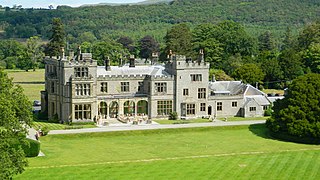
Sir James Thornhill was an English painter of historical subjects working in the Italian baroque tradition. He was responsible for some large-scale schemes of murals, including the "Painted Hall" at the Royal Hospital, Greenwich, the paintings on the inside of the dome of St Paul's Cathedral, and works at Chatsworth House and Wimpole Hall.

The Expulsion of the Acadians, also known as the Great Upheaval, the Great Expulsion, the Great Deportation and Le Grand Dérangement, was the forced removal by the British of the Acadian people from the present day Canadian Maritime provinces of Nova Scotia, New Brunswick, and Prince Edward Island — parts of an area also known as Acadia. The Expulsion (1755–1764) occurred during the French and Indian War and was part of the British military campaign against New France. The British first deported Acadians to the Thirteen Colonies, and after 1758, transported additional Acadians to Britain and France. In all, of the 14,100 Acadians in the region, approximately 11,500 Acadians were deported. A census of 1764 indicates that 2,600 Acadians remained in the colony, presumably having eluded capture.

The coat of arms of the Washington family was first used to identify the family in the 12th century, when the Washington family took possession of Washington Old Hall in County Durham, England. This coat of arms is the one that was used by George Washington, President of the United States of America from 1789 to 1797.

New Chelsea-New Melbourne-Brownsdale-Sibley's Cove-Lead Cove is a designated place in the Canadian province of Newfoundland and Labrador, consisting of five unincorporated fishing villages on the Trinity Bay (TB) side of the northern tip of the Bay de Verde Peninsula. All of these communities are underlain by Precambrian bedrock of the Big Head Formation, chiefly gray to green arkose and siltstone. Soils are stony loam podzols and are mapped as Turk's Cove series except at Lead Cove which lies on the less well drained Old Perlican series.

Cape Sable Island, locally referred to as Cape Island, is a small Canadian island at the southernmost point of the Nova Scotia peninsula. Sometimes confused with Sable Island. Historically, the Argyle, Nova Scotia region was known as Cape Sable and encompassed a much larger area than simply the island it does today. It extended from Cape Negro (Baccaro) through Chebogue.
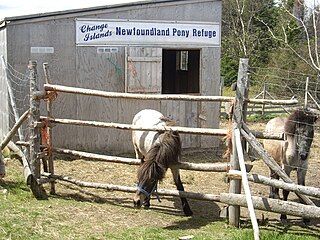
The Newfoundland pony is a breed of pony originating in Newfoundland, Canada. They are sturdy and muscular ponies, found in many colors, including the relatively rare white coloration. The Newfoundland developed from a mix of English, Irish and Scottish pony breeds brought to Newfoundland by settlers over a period of four centuries. Initially free-roaming, they crossbred to produce the modern type. They were used by settlers as draft and multi-purpose ponies until the mid-20th century, when they were brought almost to the point of extinction by mechanization and slaughter. The population rebounded slightly after the formation of a breed registry in 1980, but still remains low. In 1997, the Newfoundland pony was declared a heritage breed of Newfoundland and Labrador, which afforded it protection under the law, but the breed has not yet been recognized under the Canadian federal Animal Pedigree Act. As of 2008, there were 248 registered ponies of breeding age, out of a total population of 361. In 2013, the widely dispersed breeding population is still estimated at between 200 and 250 animals.

Ainstable is a small village and civil parish in the English county of Cumbria.
The Armenian Brotherhood Church started within the Armenian Evangelical Church in the 19th century.

Thomas Lamplugh was an English churchman who became Archbishop of York.
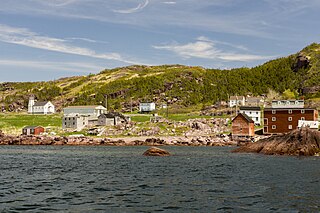
Open Hall-Red Cliffe is a designated place in the province of Newfoundland and Labrador, Canada.
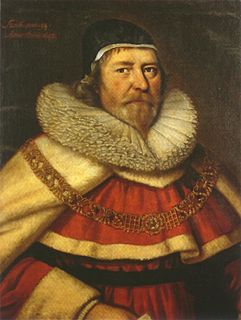
The Bankeses were an important landed gentry family in Dorset, England for over 400 years. They owned large portions of land throughout Dorset and made significant contributions to the political history and development of the country.
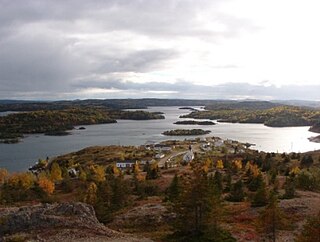
Pilley's Island is a town in Newfoundland and Labrador. It is located in Division No. 8, Newfoundland and Labrador.

Centreville–Wareham–Trinity is a town in the Canadian province of Newfoundland and Labrador, located on Bonavista Bay. The town had a population of 1,161 in the Canada 2011 Census.
The Reverend Julian Moreton (1825–1900) was a Church of England (Anglican) clergyman and author who travelled from England to Newfoundland, Canada to be ordained as a missionary for the Society for the Propagation of the Gospel in Foreign Parts. He stayed for thirteen years, kept a detailed journal, and wrote a book, entitled "Life and work in Newfoundland : reminiscences of thirteen years spent there".
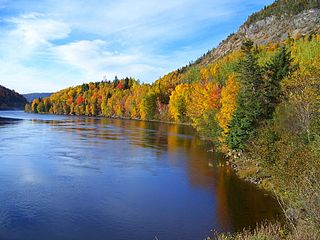
Newfoundland is a large Canadian island off the east coast of the North American mainland, and the most populous part of the Canadian province of Newfoundland and Labrador. It has 29 percent of the province's land area. The island is separated from the Labrador Peninsula by the Strait of Belle Isle and from Cape Breton Island by the Cabot Strait. It blocks the mouth of the Saint Lawrence River, creating the Gulf of Saint Lawrence, the world's largest estuary. Newfoundland's nearest neighbour is the French overseas community of Saint-Pierre and Miquelon.
Armathwaite Nunnery was a Benedictine nunnery in Cumbria, England. It was situated near the confluence of the rivers Croglin Water and Eden in the southern angle of the parish of Ainstable, and was first known as the nunnery of Ainstable.
Port au Choix is a peninsula on the western coast of the island of Newfoundland, Canada. Discoveries as early as 1904 provide evidence that native peoples settled here [6], burials, structural remains, and artifacts such as points, tools, and bones of discarded food [3].
Delight was an English sailing ship that ran aground off Sable Island, while she was on Sir Humphrey Gilbert's expedition with HMS Squirrel to Newfoundland, Canada.


